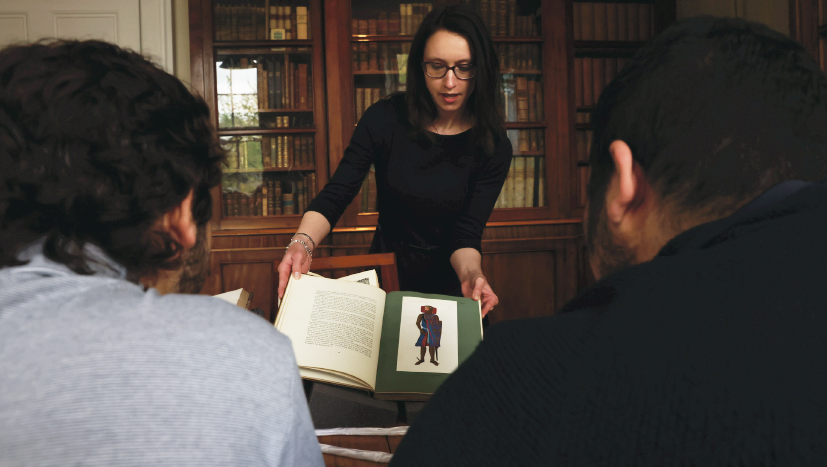In Year 1 (known in Cambridge as Part I) in the History of Art you will be introduced to over 2000 years of Art History, and gain an understanding of how teaching and learning works at the university. You’ll often be working with works of art and architecture found within Cambridge and will be expected to gain a good understanding of the fundamental concepts of Art History.
Part I has three components:
1. Paper 1, ‘The Objects of Art History’. This year-long survey course focusing on works of art and architecture in Cambridge is arranged more or less in chronological order from the Middle Ages to the present day. It will help you to grasp the broad history of Western and some non-Western art and architecture: its main styles, techniques and traditions, with direct reference to objects which you will be able to see around Cambridge. Objects is assessed via a portfolio of coursework comprising a catalogue entry, an exhibition review and a collection display proposal, with deadlines distributed through the year.
2. ‘The Meaning of Art’ and ‘The Making of Art’. These two courses, which run in parallel throughout the year, use specific time periods and issues to explore some of the key questions of History of Art. You will attend lectures and seminars, and prepare weekly written work to discuss in small group supervisions. In ‘The Meaning of Art’ you will study how works of art and architecture are interpreted within different cultural traditions. In contrast, in ‘The Making of Art’ you will examine how works of art are made and how the technologies behind the artistic process changed over time. For both of these courses you will have to produce essays and sit two end-of-year exams, one of which is an essay paper while the second is a visual analysis exam.
3. A Short Dissertation. This is a piece of written work of 5,000 words based on a work of art or architecture in or around Cambridge. You will work with your Director of Studies to choose a suitable topic.

